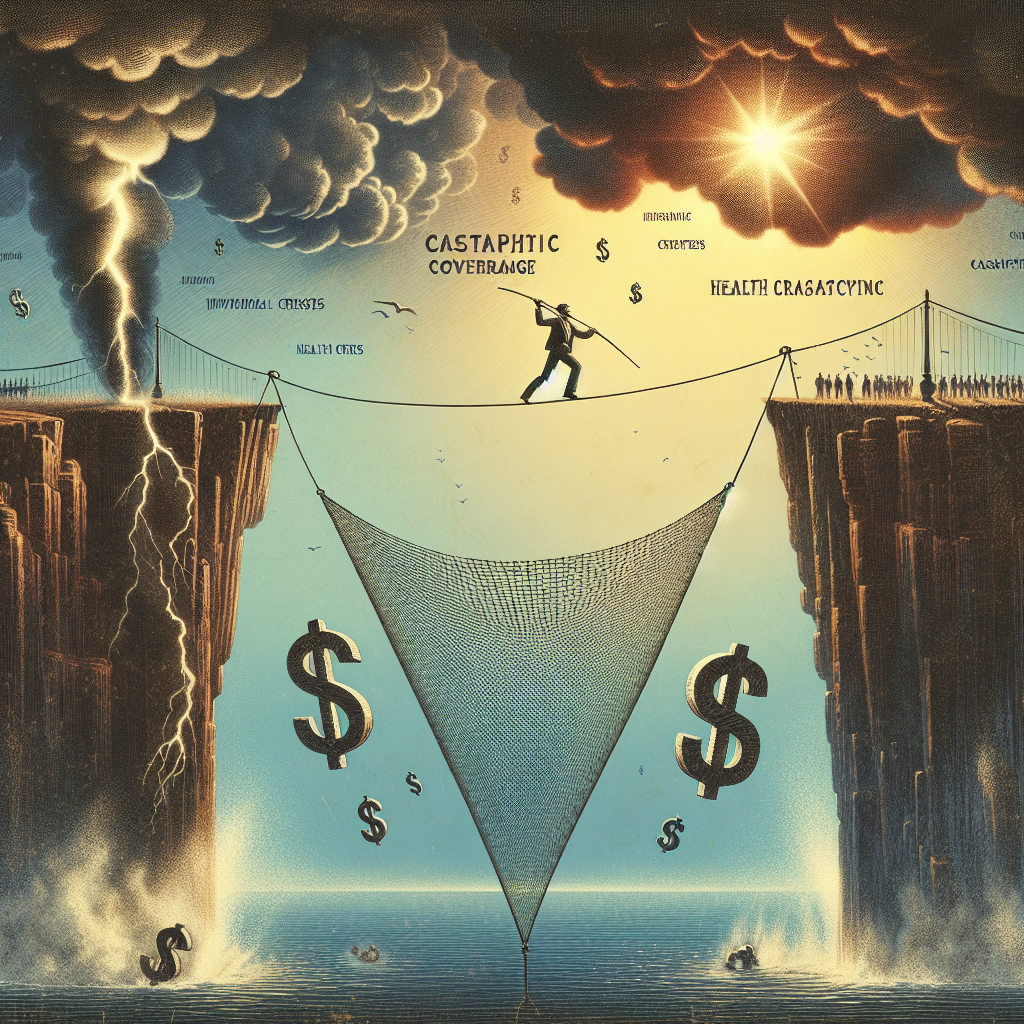Filed under Home Insurance on
What Is Good Home Insurance Coverage Explained

Prices are up, storms are harsher, and rebuilding costs don’t look anything like they did five years ago. If you’re trying to make sense of homeowners insurance in this environment, you’re not alone. Many people search for What Is Good Home Insurance Coverage Explained in plain language because they want a simple, confident answer they can use the same day. This guide delivers that—without fluff—so you can protect your home, control costs, and avoid gotchas at claim time.
The short answer: what “good” coverage looks like right now
If you only read one section, make it this one. In today’s market, a solid policy typically includes:
- Dwelling (Coverage A) insured at full replacement cost, not what you paid or what you owe on the mortgage.
- Extended or guaranteed replacement cost (at least +25%, up to +100% in high-cost areas) to buffer inflation and surge pricing after disasters.
- Personal property covered at replacement cost (RCV), not actual cash value (ACV), with enough limit for your belongings and separate scheduling for high-value items.
- Loss of use (additional living expenses) of at least 20–30% of Coverage A to pay for temporary housing if you can’t live at home.
- Personal liability of $300,000 to $500,000 minimum; an umbrella policy if you have meaningful assets or a high public profile.
- Water backup, service line, and ordinance or law endorsements; consider equipment breakdown and cyber/ID fraud depending on your setup.
- Realistic deductibles, plus awareness of special wind/hail or named-storm deductibles common in many states.
- Strong carrier financial strength (AM Best A- or better) and a reputation for claims service.
Think of this as your quick, practical version of What Is Good Home Insurance Coverage Explained—one that balances coverage with cost and responds to today’s risks.
Policy building blocks, decoded
Most homeowners policies are HO-3 (special form) or HO-5 (broader, open-perils for personal property). HO-5 generally offers stronger protection and fewer gaps, but HO-3 can be excellent with the right endorsements.
Coverage A: Dwelling
This is your home’s rebuild cost, not its market value. Good policies rely on detailed rebuild estimators (materials, finishes, roof type, local labor), and you should update this after renovations. Extended replacement cost helps when labor and materials spike after a catastrophe—an increasingly common reality, according to industry data from the Insurance Information Institute and reinsurance markets.
Coverage B: Other structures
Covers fences, sheds, detached garages—often 10% of Coverage A. If you’ve added an ADU or studio, increase this limit.
Coverage C: Personal property
Your belongings. Aim for replacement cost coverage so you can buy new for old, without depreciation. High-value items like jewelry, art, or collectibles usually require scheduling with appraisals for full protection and lower deductibles.
Coverage D: Loss of use
Pays for hotel stays, rentals, laundry, meals beyond your normal budget—essential if your neighborhood becomes a construction zone for months. Keep receipts; policies typically require proof of extra expenses.
Coverage E: Personal liability
If someone is injured or sues you for property damage, this is your legal defense and settlement fund. Defense costs are generally in addition to your limit. Many families set this to $500,000 and add a $1–$2 million umbrella.
Coverage F: Medical payments to others
Small, no-fault payments for guest injuries—often $1,000 to $5,000—to help minor incidents stay minor.
Perils, valuation, and deductibles: where policies really differ
Open-perils vs. named perils
Open-perils coverage pays for all causes of loss except those excluded; named perils pays only for listed causes. HO-5 typically gives you open-perils on both the dwelling and personal property, which reduces arguments at claim time.
Replacement cost (RCV) vs. actual cash value (ACV)
RCV pays to replace with new materials; ACV subtracts depreciation. Aim for RCV on both structure and contents. Be aware that some insurers settle roofs at ACV unless you add an endorsement or meet specific roof-age and material criteria.
Deductibles—more than one number
Beyond your base deductible, many regions now feature separate wind/hail, hurricane, named storm, wildfire, or even convective storm deductibles, often as a percentage of Coverage A. Know what triggers them. A 2% deductible on a $500,000 home equals $10,000 out-of-pocket—worth it for premium savings only if you can comfortably cover that in an emergency.
What most home insurance doesn’t cover
- Flood: Standard policies exclude flood from rising water. Consider NFIP or private flood insurance if you’re in a flood zone—or anywhere heavy rain overwhelms drainage.
- Earthquake: Typically excluded; consider a separate policy or endorsement in seismic areas.
- Sewer/water backup: Not included unless you add an endorsement. This is one of the most frequent, smelly, and costly losses.
- Maintenance and wear: Rust, mold from long-term leaks, and gradual deterioration are not covered. Insurers expect reasonable upkeep.
- Power surge: Mixed treatment—endorsements or equipment breakdown coverage can help.
- Business activities: Home businesses may have limited or no coverage for inventory or liability; ask about home-business endorsements or a commercial policy.
Understanding exclusions is as important as understanding the inclusions. If you’re still wondering What Is Good Home Insurance Coverage Explained at a practical level, it’s the combination of strong base coverage plus endorsements that fill your specific gaps.
Smart endorsements that punch above their weight
- Water backup: Pays for damage if a drain, sewer, or sump overflows—among the most common non-weather claims.
- Extended or guaranteed replacement cost: Helps when rebuilding costs run higher than expected. In catastrophe clusters, materials and labor can surge for months.
- Ordinance or Law: Pays for code upgrades when rebuilding after a covered loss; older homes especially need this.
- Service line: Covers buried utilities from the street to your home—water, sewer, electrical—often excluded otherwise.
- Equipment breakdown: Covers mechanical/electrical failures for HVAC, appliances, and smart systems.
- Scheduled personal property: Jewelry, fine art, cameras, collectibles—broader perils and lower or no deductibles.
- Matching siding/roof: Helps when only part of a material is damaged but you need a consistent look.
- Cyber/ID fraud: Growing relevance with connected homes and online finance.
Liability protection: the quiet MVP
Many policyholders focus on wind and fire, but liability is where you protect your savings and future income. Dog bites, backyard gatherings, social host liability, even certain online defamation claims can land here. Set the base policy at $300,000–$500,000 and consider an umbrella policy to add $1–$5 million more. Umbrellas are often cost-effective, especially when bundled with auto and home.
How much coverage do you actually need?
Insurers use replacement-cost estimators, but you should sanity-check the result. Try this approach:
- Start with local rebuild cost per square foot (talk to contractors or check regional construction reports). Multiply by your finished square footage.
- Add for custom features: high-end kitchens, built-ins, specialty windows, solar panels, EV chargers, or smart-home systems.
- Account for unique site factors: hillside access, long driveways, difficult debris removal, or historical-district requirements.
- Layer on extended replacement cost (25–50% or more in volatile markets).
- Recalculate after any upgrade, addition, or major material change.
Industry trends since 2020 show sustained cost inflation for construction labor and materials, plus longer supply-chain timelines. That’s why the “buffer” from extended replacement cost matters more in 2025 than it did in 2018.
Shopping for a policy without the guesswork
A few best practices can improve both your coverage and your experience:
- Financial strength first: Look for AM Best A- (Excellent) or better or equivalent ratings. You want a carrier that can pay when catastrophe losses stack up.
- Claims reputation: Reviews aren’t perfect, but patterns matter. Independent agent feedback and J.D. Power claims satisfaction studies are useful signals.
- Independent agent vs. direct: Independents can quote multiple carriers and tailor endorsements; direct carriers sometimes offer simpler experiences and competitive bundles.
- Accuracy in the application: Misstated roof age, square footage, or updates can bite you at claim time. Provide photos and permits if you have them.
- Bundle strategically: Auto + home can unlock 10–25% savings but compare the total package, not just one line item.
- Smart-home discounts: Water-leak sensors, monitored security, and whole-house shutoff valves can reduce both risk and premium.
Premiums keep rising—here’s how to fight back without gutting coverage
Across the U.S., homeowners rates have climbed due to severe weather, higher reinsurance costs, and pricier rebuilds. Many states have seen double-digit increases since 2020, with volatility in coastal and wildfire zones. You can’t control macro trends, but you can influence your risk profile:
- Harden the home: Impact-resistant roofing, Class A fire-rated materials, defensible space in wildfire areas, and upgraded siding.
- Mitigate water losses: Install automatic water shutoff valves, leak detectors near water heaters, washing machines, and under sinks.
- Tackle aging systems: Replace polybutylene or galvanized plumbing, outdated electrical panels, and brittle supply lines.
- Improve the roof: Many carriers give discounts for newer roofs or FORTIFIED designations; some offer better settlement terms if your roof meets certain standards.
- Raise the base deductible: Increasing from $1,000 to $2,500 or $5,000 can reduce premium—but only if you keep an emergency fund to match.
- Avoid small claims: Frequent small claims can trigger surcharges or non-renewals. Pay out-of-pocket for minor losses when reasonable.
Claims: prepare now, succeed later
Policies are promises, but documentation makes the promise easier to collect. Before a loss:
- Create a home inventory: Video each room, open drawers, and closets. Store files offsite or in the cloud.
- Save receipts and appraisals: Especially for upgrades and scheduled items.
- Know your contractors: Vet local, licensed pros before you need them.
During a claim:
- Prevent further damage: Tarp roofs, shut off water—most policies require this.
- Document everything: Photos, invoices, and a simple log of calls and emails with dates.
- Understand depreciation and holdback: You may receive ACV upfront and the rest (RCV) after proof of repair.
- Ask about managed repair programs: Some carriers require using network contractors; others give discounts if you opt in.
- Know dispute options: Appraisal, mediation, or a public adjuster can help resolve valuation disagreements.
Special situations that change the rules
Condos and townhomes (HO-6)
Coordinate your unit-owner policy with the association’s master policy. You may need loss assessment coverage, increased building coverage if your bylaws make you responsible for interiors, and water backup for shared plumbing stacks.
Landlords (DP-3) and short-term rentals
Short-term rental activity may be excluded on standard homeowners policies. Ask about specific endorsements or a landlord/host policy that covers tenant-caused damage and loss of rental income.
High wildfire or coastal risk areas
You may face higher deductibles, sublimits for roofs, or even non-renewal. Wildfire mitigation (clearing defensible space, ember-resistant vents) and hurricane protections (rated shutters, wind-resistant garage doors) can open doors to more carriers and better rates.
Common pitfalls to avoid
- Insuring for mortgage balance or purchase price: Neither reflects rebuild cost.
- Forgetting code upgrades: Ordinance or law coverage is essential for older homes.
- Ignoring personal property gaps: Without scheduling, jewelry theft limits can be surprisingly low.
- Overlooking separate peril deductibles: A low base deductible can hide a high named-storm percentage deductible.
- Setting liability too low: Legal fees add up fast; umbrella policies are a cost-effective backstop.
- Letting coverage stagnate: Update limits after renovations and every renewal cycle.
What experts and data say
Consumer advocates and industry bodies such as the Insurance Information Institute (III), the National Association of Insurance Commissioners (NAIC), and FEMA consistently emphasize three themes: accurately estimating replacement cost, understanding exclusions (especially flood), and investing in mitigation to reduce both loss severity and premiums. Carrier financial strength and claims responsiveness also matter more during periods of widespread catastrophes, when weaker balance sheets can translate into slower or stricter claims handling.
A quick annual checklist
- Confirm Coverage A equals true rebuild cost; add or adjust extended replacement cost.
- Ensure contents are on replacement cost and schedule high-value items.
- Verify Loss of Use is at least 20–30% of Coverage A.
- Review liability limits; add or update umbrella if your assets or risk have grown.
- Add or confirm water backup, service line, equipment breakdown, and ordinance or law.
- Audit deductibles, including special wind/hail or named-storm percentages.
- Update the application: roof age, upgrades, security/water devices for discounts.
- Refresh your home inventory and store it safely.
- Get competing quotes or ask your agent to re-market if premiums spike.
If you’ve been hunting for What Is Good Home Insurance Coverage Explained in checklist form, the steps above will keep you aligned with best practices year after year.
FAQs
How often should I review my policy?
At least annually, and immediately after any renovation, major purchase, or household change (like adding a dog, installing a pool, or starting a home business). Replacement costs and risk profiles shift fast.
Is flood covered?
No. You need separate flood insurance through NFIP or a private carrier. Even outside high-risk zones, heavy rain and overwhelmed drainage cause many uncovered losses each year.
How high should my liability limit be?
Start at $300,000–$500,000; add a $1–$5 million umbrella based on your assets, income, and exposure. Umbrellas are surprisingly affordable and often bundled for discounts.
What’s the difference between ACV and RCV for contents?
ACV subtracts depreciation; RCV pays to replace with new. Most homeowners prefer RCV for contents because it prevents big out-of-pocket gaps after a loss.
Will filing a claim raise my premium?
It can. Frequency matters more than one-off severity. Avoid filing small claims you can self-fund; reserve the policy for larger events and liability exposures.
Bringing it all together
Good coverage is less about chasing the cheapest price and more about buying the right promise for the day you need it. In a world of higher rebuilding costs and more severe weather, the winning formula is accurate replacement cost, strategic endorsements, appropriate deductibles, and robust liability.
When someone asks, What Is Good Home Insurance Coverage Explained, the real answer is a policy that holds up under pressure: it rebuilds your home to the standard you expect, replaces your belongings without depreciation surprises, houses you comfortably during repairs, defends you in court if needed, and is backed by an insurer that can keep its word after a bad storm season.
Before your next renewal, take 30 minutes to review limits, add the endorsements that fit your risk, and price-check with a trusted agent. That small investment now can save you months of stress later. And if a friend asks you for What Is Good Home Insurance Coverage Explained, you’ll be ready with a clear, confident checklist instead of guesswork.
To recap in one line for easy sharing: What Is Good Home Insurance Coverage Explained means full replacement cost for your home and belongings, strong loss-of-use and liability, smart endorsements for common gaps, realistic deductibles, and a financially solid insurer that shows up when it matters.




